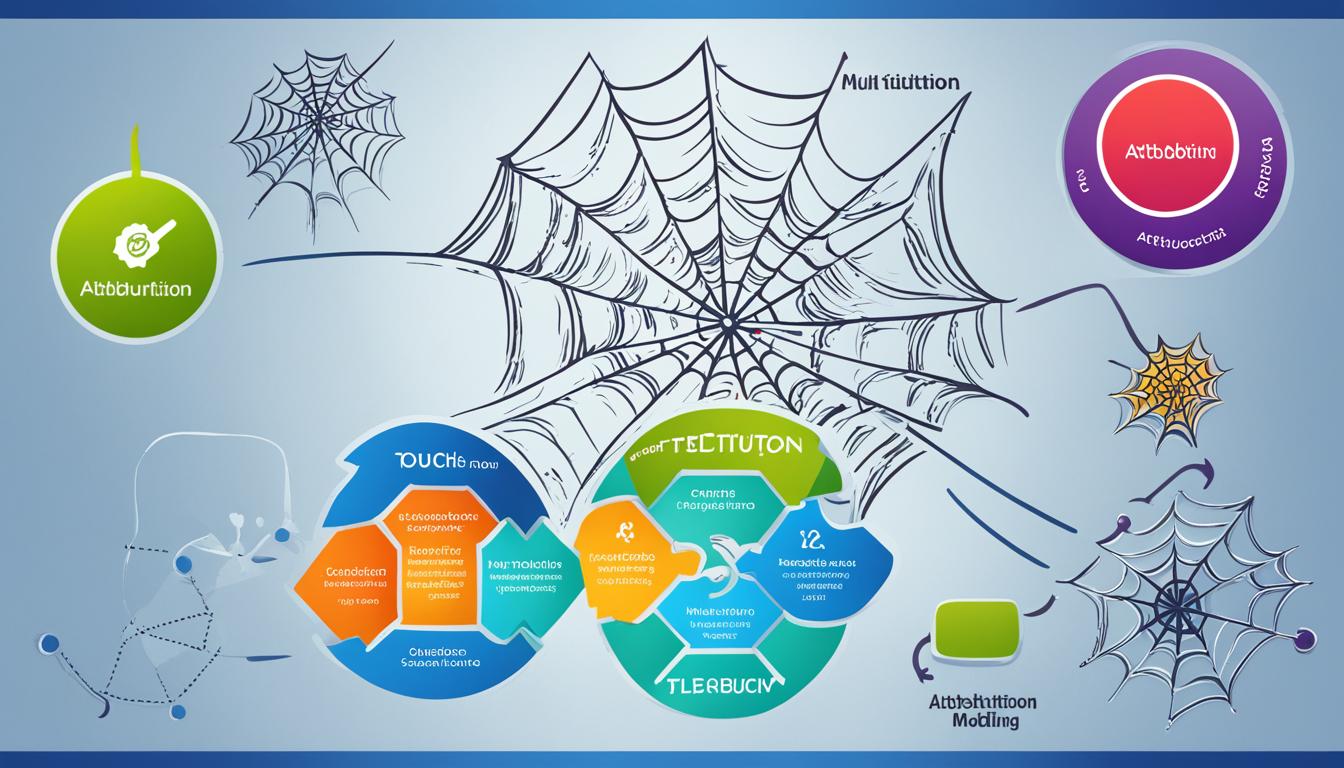In the world of marketing strategies, two approaches stand out: horizontal marketing and vertical marketing. These two concepts have distinct characteristics, advantages, and target audiences. Understanding the differences between them is crucial for businesses looking to optimize their marketing efforts and reach the right customers.
Horizontal marketing involves targeting a wide range of customer segments within an industry. It aims to reach a broader audience across different sectors, offering adaptable products to meet diverse requirements. On the other hand, vertical marketing focuses on a specific sub-sector within an industry. It tailors offerings to meet the unique needs of a particular market segment, driven by a deep understanding of their challenges and regulations.
By implementing horizontal or vertical marketing strategies, businesses can gain a competitive edge, differentiate themselves within the industry, and maximize their market reach in different ways. Horizontal market segmentation, for example, divides the market into broad segments based on industry sectors, while vertical market segmentation delves into more specific sub-segments within those sectors.
Advantages of vertical marketing include niche expertise, higher margins, and the ability to develop targeted sales and marketing strategies. On the other hand, benefits of horizontal marketing include a broader range of clients, a diversified industry portfolio, and the opportunity for service specialization.
Choosing between a horizontal or vertical marketing approach depends on various factors, including industry expertise, available range of clients, and risk diversification. By leveraging the advantages of both approaches, businesses can effectively reach their target audience and achieve marketing success.
Key Takeaways:
- Horizontal marketing targets a wide range of customer segments within an industry, while vertical marketing focuses on a specific sub-sector.
- Horizontal marketing aims to reach a broader audience across different sectors, offering adaptable products, while vertical marketing tailors offerings to meet the unique needs of a particular market segment.
- Horizontal market segmentation divides the market by industry sectors, while vertical market segmentation delves into more specific sub-segments within those sectors.
- Advantages of vertical marketing include niche expertise, higher margins, and targeted sales and marketing strategies, while benefits of horizontal marketing include a broader range of clients, a diversified industry portfolio, and service specialization.
- Choosing between a horizontal or vertical marketing approach depends on factors such as industry expertise, client range, and risk diversification.
Understanding Horizontal Marketing
Horizontal marketing involves targeting a wide range of customer segments within an industry. Instead of focusing on a specific niche, companies diversify their products to appeal to a broader audience. This approach leverages existing capabilities to meet the diverse requirements of various customer segments within an industry.
In horizontal marketing, adaptability is key. Companies offer versatile products that can be integrated into different business environments, catering to the unique needs of each target segment. By addressing the diverse requirements of a broad audience, companies can maximize their industry reach and capture a larger market share.
Adaptable products in horizontal marketing enable companies to maintain a competitive edge and sustain growth. These products can be customized or tailored to meet the specific needs of different customer segments while utilizing a common base. A company’s ability to adapt to different customer requirements creates a strong value proposition and positions them as a reliable partner within the industry.
To better understand the concept of horizontal marketing, consider the following example:
| Industry | Target Segments | Adaptable Products |
|---|---|---|
| Technology | Small businesses, enterprises, education | Software solutions for accounting, project management, and education |
| Sports and Fitness | Amateur athletes, professional sports teams, fitness centers | Sportswear, equipment, and fitness trackers |
| Automotive | Individual car owners, rental companies, public transportation | Cars, spare parts, and fleet management solutions |
As shown in the example above, adaptable products allow companies to cater to a broad audience with diverse requirements. By strategically positioning themselves to fulfill the needs of different customer segments within an industry, companies can achieve greater market penetration and drive revenue growth.
Exploring Vertical Marketing
Vertical marketing is a strategic approach that focuses on a specific sub-sector within an industry. Companies that adopt vertical marketing tailor their offerings to meet the unique needs and requirements of a particular market segment. By aligning their products or services with the specific characteristics of the sub-sector, these companies can deliver tailored solutions that resonate with their targeted audience.
Successful vertical marketing requires a deep understanding of the challenges, regulations, and trends within the specific sector. This deep understanding enables companies to develop offerings that address the pain points and goals of their target audience, positioning themselves as reliable partners and industry experts.
Let’s take a look at an example to illustrate the concept of vertical marketing:
Imagine a company that specializes in providing inventory management software. While the company could target a broad audience across multiple sectors, it decides to focus its efforts on the retail sub-sector. By doing so, the company can develop a deep understanding of the unique challenges faced by retailers and tailor its software specifically to their needs.
By offering features like real-time inventory tracking, automated reordering, and integrated point-of-sale systems, the company appeals directly to the retail industry’s pain points and addresses their specific requirements. This tailored approach sets the company apart from its competitors and positions it as a trusted solution provider within the retail sub-sector.
Ultimately, vertical marketing allows companies to establish themselves as experts in a specific sub-sector, leading to increased conversion rates, customer loyalty, and word-of-mouth referrals within the targeted market.
Benefits of Vertical Marketing
Vertical marketing offers numerous benefits to businesses:
- Niche Expertise: By focusing on a specific sub-sector, companies gain in-depth knowledge and become experts in that industry.
- Differentiation: Tailored offerings set companies apart from competitors, making them the go-to solution provider within their target market.
- Higher Margins: Customized solutions command higher prices, leading to improved profitability.
- Targeted Sales and Marketing: With a deep understanding of the target market, companies can develop targeted sales and marketing strategies tailored to the industry’s unique characteristics and preferences.
Vertical marketing allows businesses to capitalize on their deep industry knowledge, deliver tailored solutions, and establish themselves as trusted partners within a specific sub-sector.
Horizontal vs Vertical Marketing Segmentation
When it comes to marketing segmentation, businesses have two primary approaches: horizontal market segmentation and vertical market segmentation. These strategies involve dividing the market into different segments based on specific characteristics. Let’s explore the differences between the two and provide some examples.
Horizontal Market Segmentation
In horizontal market segmentation, the focus is on dividing the market into broad segments based on industry sectors. This approach allows businesses to target a wide range of customers across different sectors. Examples of horizontal market segments include:
- Manufacturing
- Wholesale trade
- Retail trade
- Construction
- Professional services
By targeting these horizontal segments, businesses can reach a diverse audience and cater to their specific needs within various industries.
Vertical Market Segmentation
On the other hand, vertical market segmentation involves dividing the market into more specific sub-segments based on niche industries or customer groups within those sectors. This approach focuses on tailoring offerings to meet the unique needs of a particular market sub-sector. Examples of vertical market segments include:
- Food and beverage
- Wholesale vehicle parts
- Clothing stores
- CPA firms
- Residential construction
By targeting these vertical segments, businesses can develop a deep understanding of their target audience and provide specialized solutions that resonate with their specific requirements.
Here’s a visual representation of the differences between horizontal and vertical market segmentation:
| Horizontal Market Segmentation | Vertical Market Segmentation |
|---|---|
| Targets broad segments | Focuses on specific sub-sectors |
| Includes diverse industries | Narrows down to niche industries |
| Offers adaptable products/services | Provides tailored solutions |
| Reaches a wide range of customers | Caters to a specific target audience |
As you can see, both horizontal and vertical market segmentation have their unique advantages and can be effective depending on the business’s goals and target market. Understanding these strategies can help businesses develop targeted marketing approaches and tailor their offerings for maximum impact.
Advantages of Vertical Marketing
Vertical marketing offers several advantages that can propel businesses to success in a specific industry or sub-sector. By focusing on niche expertise, companies can establish themselves as the go-to experts in their field, gaining a competitive edge over their competitors. This deep industry knowledge sets them apart in a crowded market, building trust and credibility with their target audience.
One of the key advantages of vertical marketing is the ability to differentiate products or services. By tailoring offerings to meet the unique needs and requirements of the target market, companies can provide specialized solutions that resonate with customers. This differentiation not only attracts customers but also enables companies to command higher margins due to the added value they provide.
With a deep understanding of the target market, vertical marketing allows for the development of targeted sales and marketing strategies. Companies can focus their efforts on specific industry conferences, trade publications, and account lists, maximizing their customer engagement and increasing their chances of success.
Advantages of Vertical Marketing at a Glance
| Advantages | |
|---|---|
| Niche expertise | Becoming the go-to expert in a specific industry or sub-sector |
| Differentiation | Tailoring offerings to meet the unique needs of the target market |
| Higher margins | Commanding higher prices due to specialized solutions |
| Targeted sales and marketing | Developing strategies for specific industry conferences, trade publications, and account lists |
Vertical marketing offers businesses the opportunity to establish themselves as industry leaders, providing tailored solutions and targeted marketing strategies. By leveraging niche expertise, differentiation, higher margins, and targeted sales and marketing efforts, companies can position themselves for success in their chosen industry or sub-sector.
Benefits of Horizontal Marketing
Horizontal marketing offers numerous benefits that can contribute to the success and growth of a business. By targeting a broader range of clients from different sectors, companies can reduce their reliance on a specific industry niche, expanding their customer base and diversifying their sources of revenue.
A diversified industry portfolio is another advantage of horizontal marketing. By serving clients from various sectors, businesses can mitigate the risk associated with economic downturns or industry-specific challenges. This diversity allows companies to adapt and thrive in different market conditions, ensuring long-term sustainability.
Furthermore, horizontal marketing enables businesses to specialize their services and establish themselves as experts in a chosen niche. By offering specialized services to a broader market, companies can develop a deep understanding of their target customers’ needs and tailor their offerings accordingly. This specialization leads to a number of advantages, including the ability to maintain a specialized workforce, standardize offerings, and foster innovation within the chosen niche.
Targeting Horizontal or Vertical Markets
Successfully targeting horizontal or vertical markets requires careful consideration of various factors. Companies must assess their past experience, proprietary skills, market size, infrastructure, and the decision-making process to determine the most suitable market to target. Leveraging expertise, proprietary skills, or intellectual property can help differentiate companies in their chosen market. Additionally, analyzing the size of the market, existing infrastructure, and the decision-making process provides invaluable insights for effective targeting.
| Factors to Consider | Importance |
|---|---|
| Past Experience | To build on existing knowledge |
| Proprietary Skills | To offer unique value propositions |
| Market Size | To assess potential opportunities and risks |
| Market Infrastructure | To evaluate existing resources and support |
| Decision-Making Process | To align strategies with stakeholders’ needs |
By analyzing these factors, companies can make informed decisions and effectively target horizontal or vertical markets. This strategic approach enhances the chances of success in capturing market share, maximizing growth potential, and meeting customer demands with tailored solutions.
Horizontal vs Vertical Marketing Messaging
In the world of marketing, both horizontal and vertical approaches require distinct messaging strategies to effectively reach and engage target audiences. Understanding the differences between these two approaches is crucial for crafting compelling marketing messages that resonate with customers.
The Horizontal Approach
When implementing a horizontal marketing strategy, it is essential to emphasize the adaptability and versatility of your products or services. Highlight how your offerings can cater to diverse customer segments across various sectors. By showcasing the broad applicability of your solutions, you position your brand as a flexible and reliable partner capable of meeting the needs of different industries. This approach allows you to maximize market reach and capitalize on a wide range of opportunities.
The Vertical Approach
In contrast, vertical marketing messaging should revolve around industry-specific challenges and tailored solutions. Demonstrate a deep understanding of the unique needs and pain points of the target audience within a specific sector. By showcasing your expertise in addressing industry-specific challenges, you establish your brand as a trusted partner with a customer-focused approach. This tailored messaging resonates with your target audience and positions your brand as an industry leader.
Both horizontal and vertical marketing approaches share a common goal – addressing customer needs. Thus, it is essential to adopt a customer-focused approach when crafting marketing messages for either strategy. By empathizing with your customers’ pain points and goals, you can develop targeted messaging that speaks directly to their needs, fostering trust and enhancing customer relationships.
To illustrate the differences between horizontal and vertical marketing messaging, consider the following table:
| Horizontal Marketing Messaging | Vertical Marketing Messaging | |
|---|---|---|
| Focus | Adaptability and versatility across sectors | Industry-specific challenges and tailored solutions |
| Target Audience | Diverse customer segments | Unique needs of a specific sector |
| Key Emphasis | Wide industry reach and broad applicability | Deep understanding of industry challenges |
| Result | Maximized market reach and diverse opportunities | Established expertise and leadership within a specific industry |
https://www.youtube.com/watch?v=jr08MzOK7nQ
The Role of Campaign Checklist in Horizontal and Vertical Marketing
Both horizontal and vertical marketing campaigns can benefit from a checklist to ensure campaign success. By following a comprehensive checklist, businesses can effectively plan and execute their marketing strategies, whether they are targeting a broad audience across sectors (horizontal marketing) or focusing on a specific industry or sub-sector (vertical marketing).
Here is a checklist of essential elements to consider for both horizontal and vertical marketing campaigns:
1. Landing Page
Create a dedicated landing page tailored to the target market. The landing page should effectively communicate the value proposition, engage visitors, and lead to conversions. It should have a clear call-to-action that aligns with the campaign’s objectives.
2. Case Study or Testimonials
Feature compelling case studies or testimonials from satisfied customers to establish credibility and build trust. These examples of success stories can effectively showcase the benefits and results of your products or services.
3. Content/Blogs
Produce engaging and informative content and blogs that cater to the specific needs and interests of your target audience. This content should provide valuable insights, industry trends, and actionable tips, showcasing your expertise and positioning your business as a thought leader.
4. Downloadable Content
Offer downloadable content such as whitepapers, ebooks, or guides related to the industry or niche your campaign targets. This downloadable content should provide in-depth information and additional value to prospects, capturing their contact information and nurturing them through the sales funnel.
5. Video
Incorporate video content into your marketing campaign to enhance engagement and effectively communicate your message. Videos can be used to showcase products, demonstrate use cases, provide tutorials, or feature customer testimonials. Including video in your marketing efforts can create a more dynamic and memorable experience for your target audience.
By including these elements in your horizontal or vertical marketing campaign, you can establish authority, generate leads, and effectively communicate with your target audience. A well-executed campaign checklist ensures that no essential aspect is overlooked, maximizing the success and impact of your marketing efforts.
| Element | Horizontal Marketing | Vertical Marketing |
|---|---|---|
| Landing Page | ✓ | ✓ |
| Case Study or Testimonials | ✓ | ✓ |
| Content/Blogs | ✓ | ✓ |
| Downloadable Content | ✓ | ✓ |
| Video | ✓ | ✓ |
Making the Choice: Vertical or Horizontal Marketing Approach
When it comes to choosing between a vertical or horizontal marketing approach, there are several considerations to take into account. These include industry expertise, available range of clients, and risk diversification. Each approach offers unique benefits and advantages that can impact the success of your marketing strategy.
Vertical Marketing Approach
Vertical marketing allows businesses to establish niche expertise and differentiation within a specific industry or sub-sector. By focusing on a targeted market segment, companies can tailor their products or services to meet the specific needs and challenges of that particular industry. This specialization often leads to higher profit margins and the ability to develop targeted sales and marketing strategies.
Here is an example of a table showcasing the advantages of a vertical marketing approach:
| Advantages of Vertical Marketing |
|---|
| Niche expertise |
| Differentiation within a specific industry |
| Higher profit margins |
| Targeted sales and marketing strategies |
Horizontal Marketing Approach
On the other hand, a horizontal marketing approach offers a broader range of clients from different sectors. By diversifying their target audience, businesses reduce their reliance on a single industry and create a more robust and diversified portfolio. This approach also presents the opportunity for service specialization, allowing companies to become industry leaders in their chosen niche.
Here is an example of a table showcasing the benefits of a horizontal marketing approach:
| Benefits of Horizontal Marketing |
|---|
| Broader range of clients |
| Diversified industry portfolio |
| Service specialization |

Ultimately, the choice between a vertical or horizontal marketing approach depends on your specific business goals and circumstances. Assessing your industry expertise, available range of clients, and the level of risk diversification desired will help guide your decision-making process. It’s important to evaluate the advantages and benefits of each approach and determine which aligns best with your overall marketing strategy.
Conclusion
In conclusion, the utilization of both horizontal and vertical marketing strategies is crucial for optimizing business approaches and enhancing marketing efforts. Horizontal marketing enables businesses to target a wide audience across various sectors, catering to diverse requirements and maximizing industry reach. On the other hand, vertical marketing focuses on specific industry or sub-sectors, tailoring offerings to meet the unique needs of a targeted audience.
When deciding between horizontal and vertical marketing, consideration should be given to factors such as industry expertise, the range of clients, risk diversification, and overall business goals. Horizontal marketing allows for a broader client base across different sectors, reducing reliance on a single niche and providing a diversified industry portfolio. Vertical marketing, on the other hand, offers the opportunity to establish niche expertise, leading to differentiation, higher margins, and the development of targeted sales and marketing strategies.
By harnessing the advantages of both horizontal and vertical marketing approaches, businesses can effectively reach their target audience, achieve marketing success, and maximize their overall business growth. It’s important to assess market segmentation, industry knowledge, and customer preferences to determine the most suitable marketing strategy for each specific business context. In summary, a well-rounded marketing strategy that incorporates elements of both horizontal and vertical marketing can result in comprehensive market coverage and create a competitive edge in the industry.
FAQ
What is horizontal marketing?
Horizontal marketing involves targeting a wide range of customer segments within an industry, offering versatile products to meet diverse customer needs and maximize market reach.
What is vertical marketing?
Vertical marketing focuses on a specific sub-sector within an industry, tailoring products or services to meet the unique needs and requirements of a particular market segment.
What is the difference between horizontal and vertical marketing?
Horizontal marketing targets a broad audience across sectors, while vertical marketing focuses on a specific industry or sub-sector. Horizontal marketing aims for industry reach, while vertical marketing aims for targeted audience engagement.
What is horizontal market segmentation?
Horizontal market segmentation involves dividing the market into broad segments based on characteristics like industry sectors.
What is vertical market segmentation?
Vertical market segmentation involves dividing the market into more specific sub-segments based on niche industries or customer groups within those sectors.
What are the advantages of vertical marketing?
Vertical marketing offers advantages such as niche expertise, differentiation, higher margins, and targeted sales and marketing strategies.
What are the benefits of horizontal marketing?
Benefits of horizontal marketing include a broader range of clients from different sectors, a diversified industry portfolio, and the potential for service specialization.
How do I target horizontal or vertical markets?
To target horizontal or vertical markets, consider factors such as past experience, proprietary skills, market size, market infrastructure, and the decision-making process.
How should I approach horizontal and vertical marketing messaging?
Horizontal marketing messaging should emphasize adaptability and versatility, while vertical marketing messaging should focus on industry-specific challenges and tailored solutions.
What role does a campaign checklist play in horizontal and vertical marketing?
A campaign checklist helps ensure campaign success by including elements such as dedicated landing pages, testimonials or case studies, engaging content and blogs, downloadable content, and video content.
How do I choose between a vertical or horizontal marketing approach?
Choosing between a vertical or horizontal marketing approach requires considering factors such as industry expertise, available range of clients, and risk diversification.



